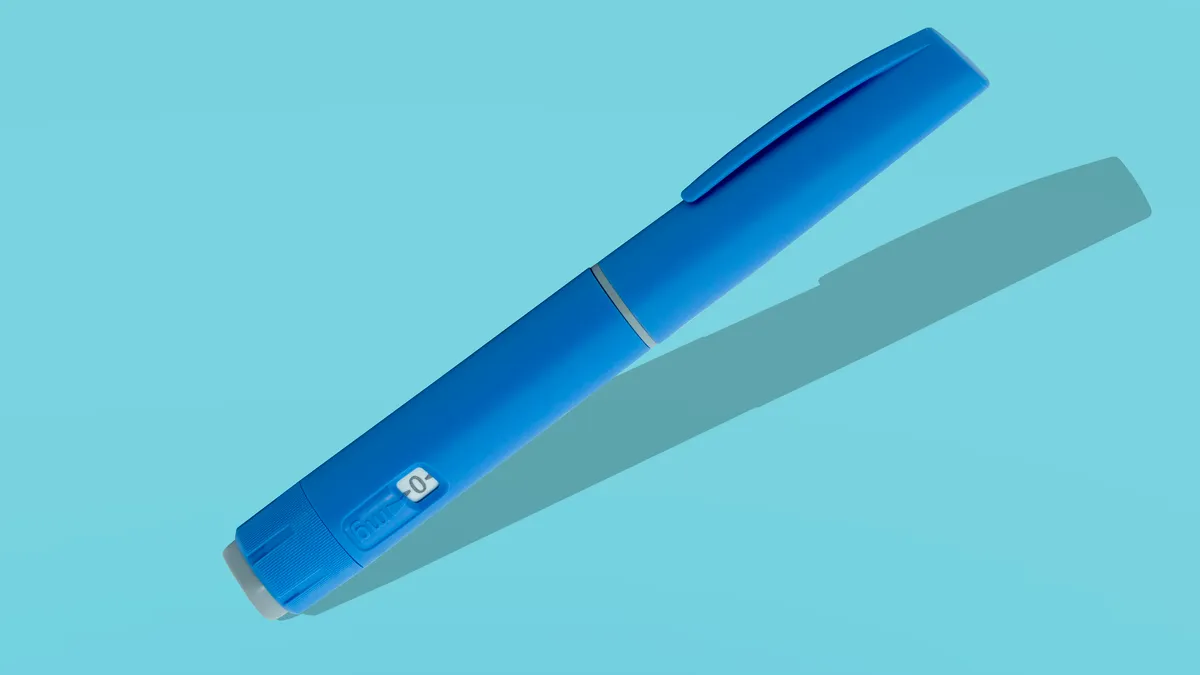Sales of blockbuster diabetes and weight loss glucagon-like peptide-1 (GLP-1) receptors are skyrocketing. Could a new application to treat a potentially deadly liver disease drive the market even higher?
Companies are now testing drugs like Novo Nordisk’s semaglutide (Ozempic and Wegovy) and Eli Lilly’s tirzepatide (Mounjaro and Zepbound) to treat metabolic dysfunction-associated steatohepatitis (MASH), formerly referred to as non-alcohol-related steatohepatitis (NASH). The condition affects some 115 million adults globally, driving a market that could reach $27 billion by 2029.
When fat accumulates in the liver it can trigger MASH, inflaming the liver and causing fibrosis or scarring, cancer or liver failure.
“Type 2 diabetes and obesity are risk factors for MASH, and some experts consider MASH the hepatic manifestation of the metabolic syndrome,” said Khang Hoang, cardiovascular and metabolic and infectious diseases analyst at Citeline.
Successful treatments for MASH have been elusive, and failures litter the research path, including once-promising candidates from Intercept, Gilead Sciences and Genfit. Weight loss can help reverse MASH and liver fibrosis, which is one of the reasons GLP-1 drugs could hold promise.
Mixed findings
Novo Nordisk experienced a setback in a phase 2 MASH trial for its type 2 diabetes drug Ozempic when it failed to hit the secondary endpoint — a reduction in liver fibrosis — but the trial may have been skewed by an unusually high response to the placebo. With that in mind, Novo is still forging ahead with a late-stage trial, anticipating a better outcome. .
More recently, Lilly saw favorable phase 2 results with its drugs Mounjaro for type 2 diabetes and Zepbound for weight loss.
“The actions of GLP-1 and GIP suggest tirzepatide could offer benefits for MASH, and these are early but promising data,” said Hoang. “The key endpoints for registration are MASH resolution without worsening liver fibrosis and/or improving liver fibrosis without worsening of MASH. Although cross-trial comparisons should be made with caution, tirzepatide’s efficacy for MASH resolution is among the best reported so far.”
Lilly reported that nearly three-quarters of participants taking the drug had no evidence of MASH and no further fibrosis progression at 52 weeks, compared to only 13% of the placebo group.
“However, we are awaiting further detail on the impact on liver fibrosis, as [it] is a strong predictor of outcomes for MASH patients,” Hoang said.
While the FDA could still approve a drug that improved MASH but not fibrosis, Hoang said European regulators won’t sign off unless both measures improve.
MASH pipeline
There is also a question whether tirzepatide would perform well enough to hold its own against other drugs in the pipeline.
“There are more advanced drug candidates for MASH that have demonstrated benefits for both key endpoints, including some orally administered agents, such as Madrigal Pharmaceuticals’ resmetirom,” Hoang said.
The FDA has already accepted Madrigal’s NDA and agreed to a priority review of resmetirom, a thyroid hormone receptor-beta agonist. If all goes well, the drug could launch in the second quarter of 2024. Other MASH drugs to watch are Inventiva Pharma’s lanifibranor, Galectin Therapeutics’ belapectin and Galmed Pharmaceuticals’ aramchol.
Due to MASH’s complexity, some experts have said a combination approach might be more effective. For example, Akero Therapeutics achieved significantly better results when it paired a GLP-1 with its investigational drug efruxifermin in a mid-stage study.
Even if GLP-1 drugs don’t hit the MASH target, drug companies are also testing GLP-1s for several other indications, including chronic kidney disease, Alzheimer’s disease, heart failure with preserved ejection fraction (HFpEF) and obstructive sleep apnea.











